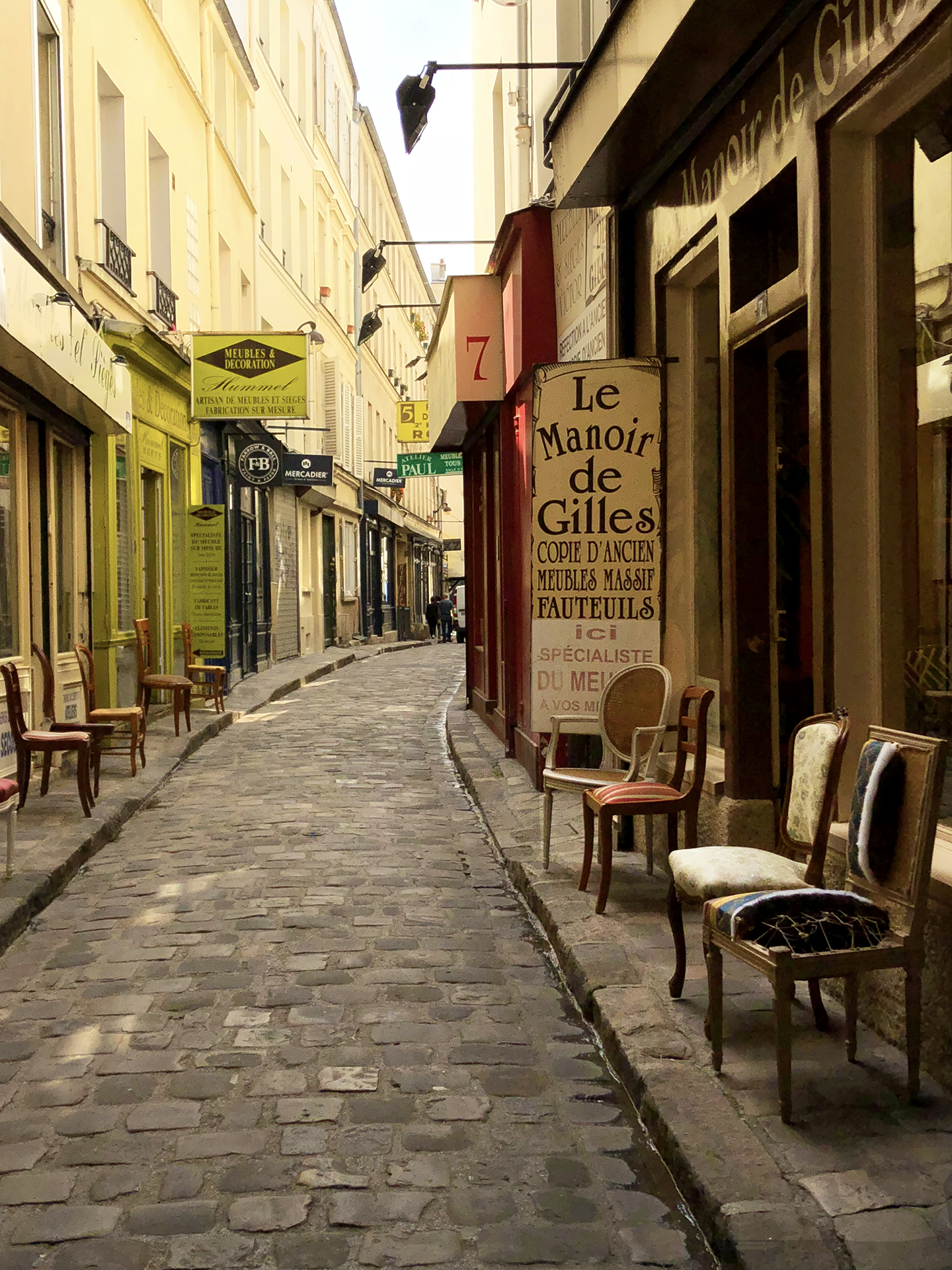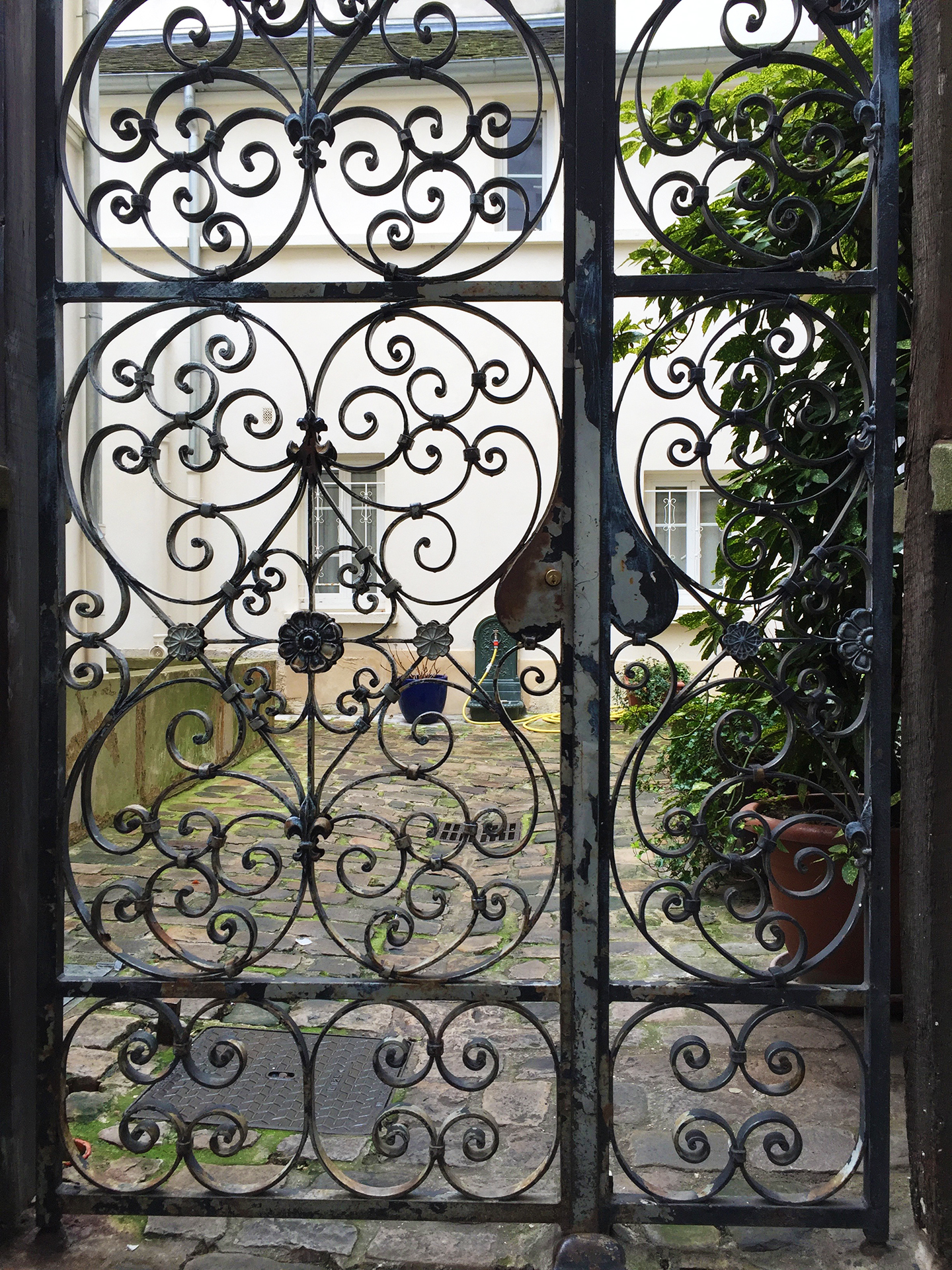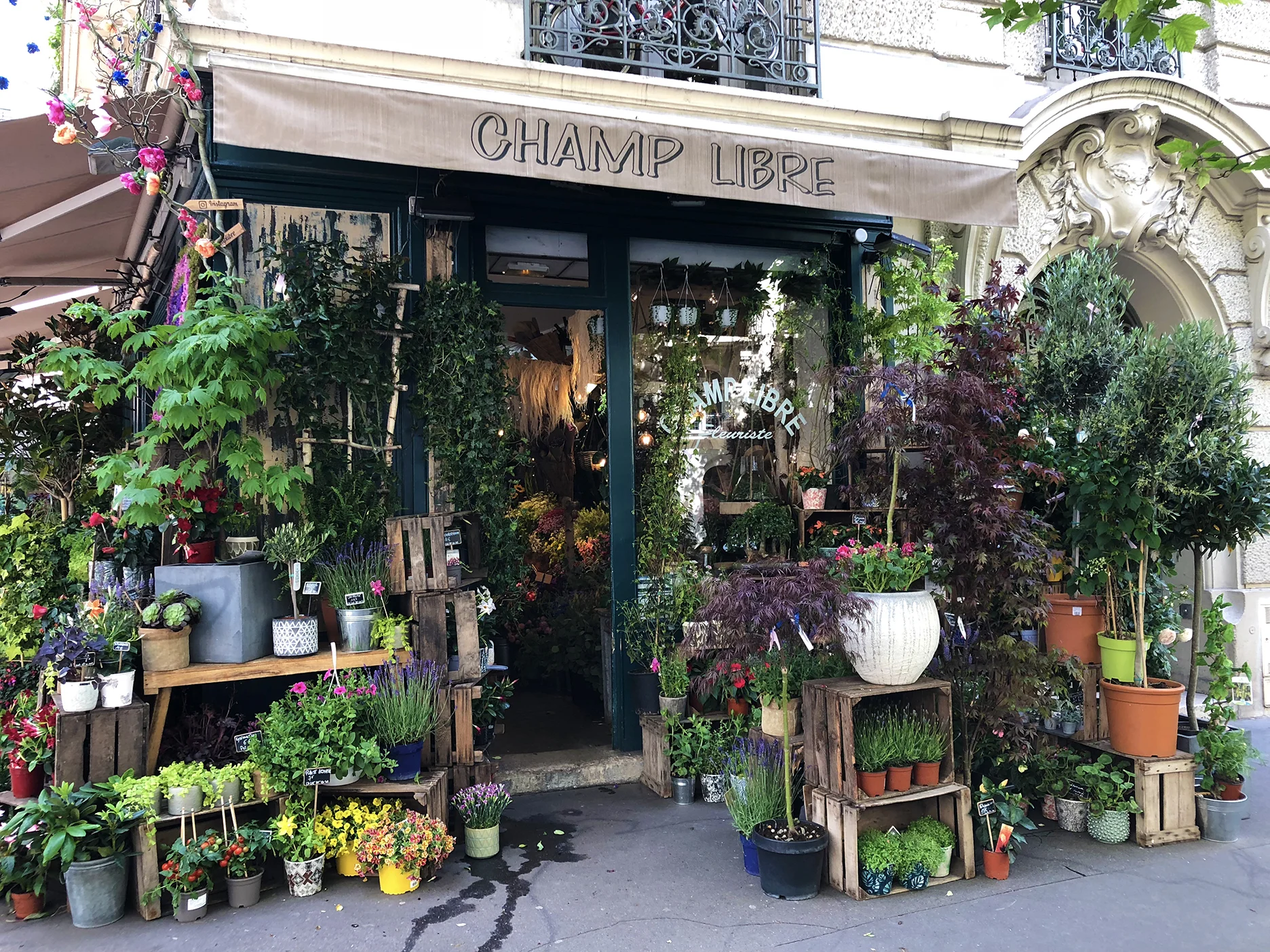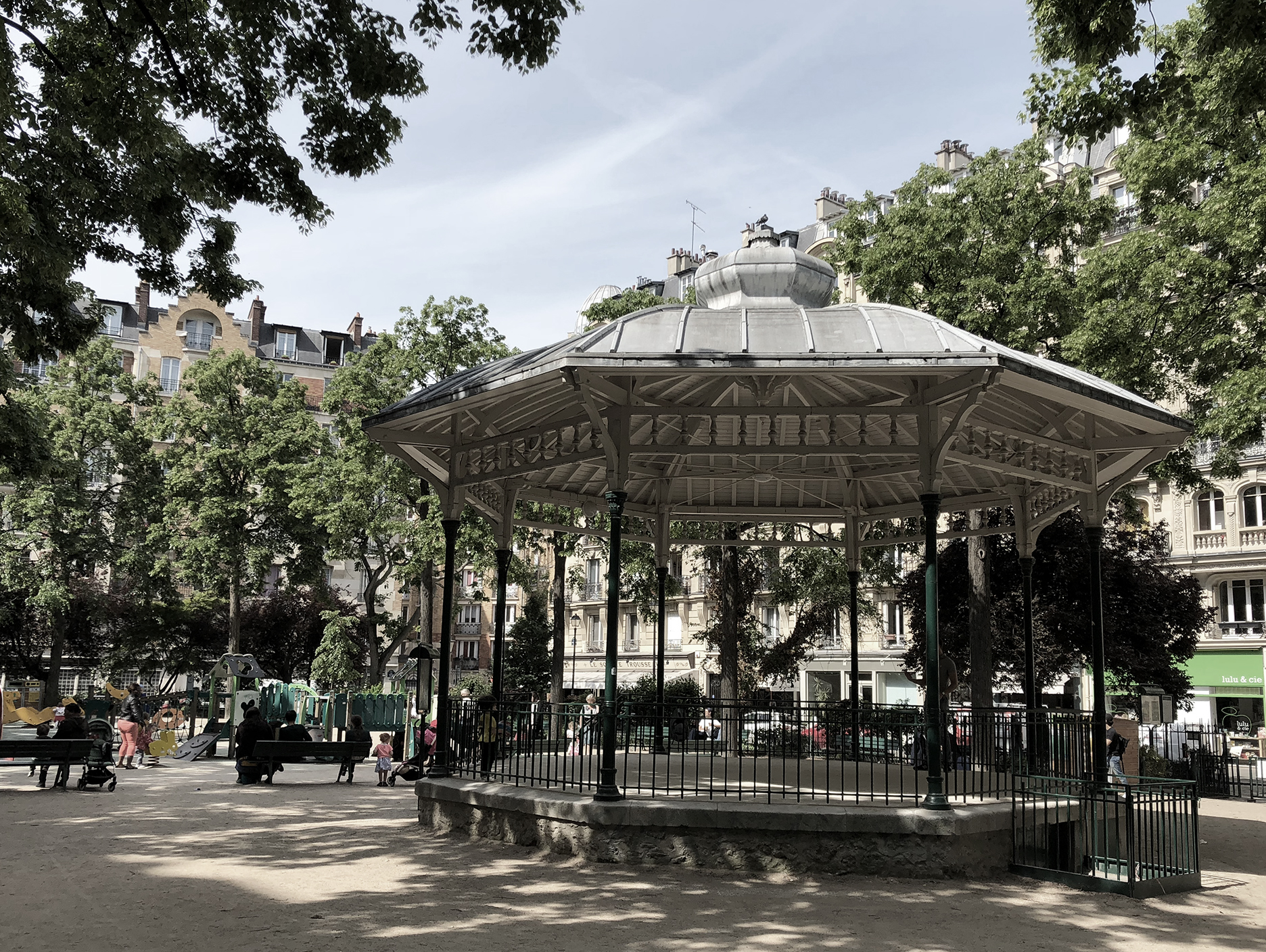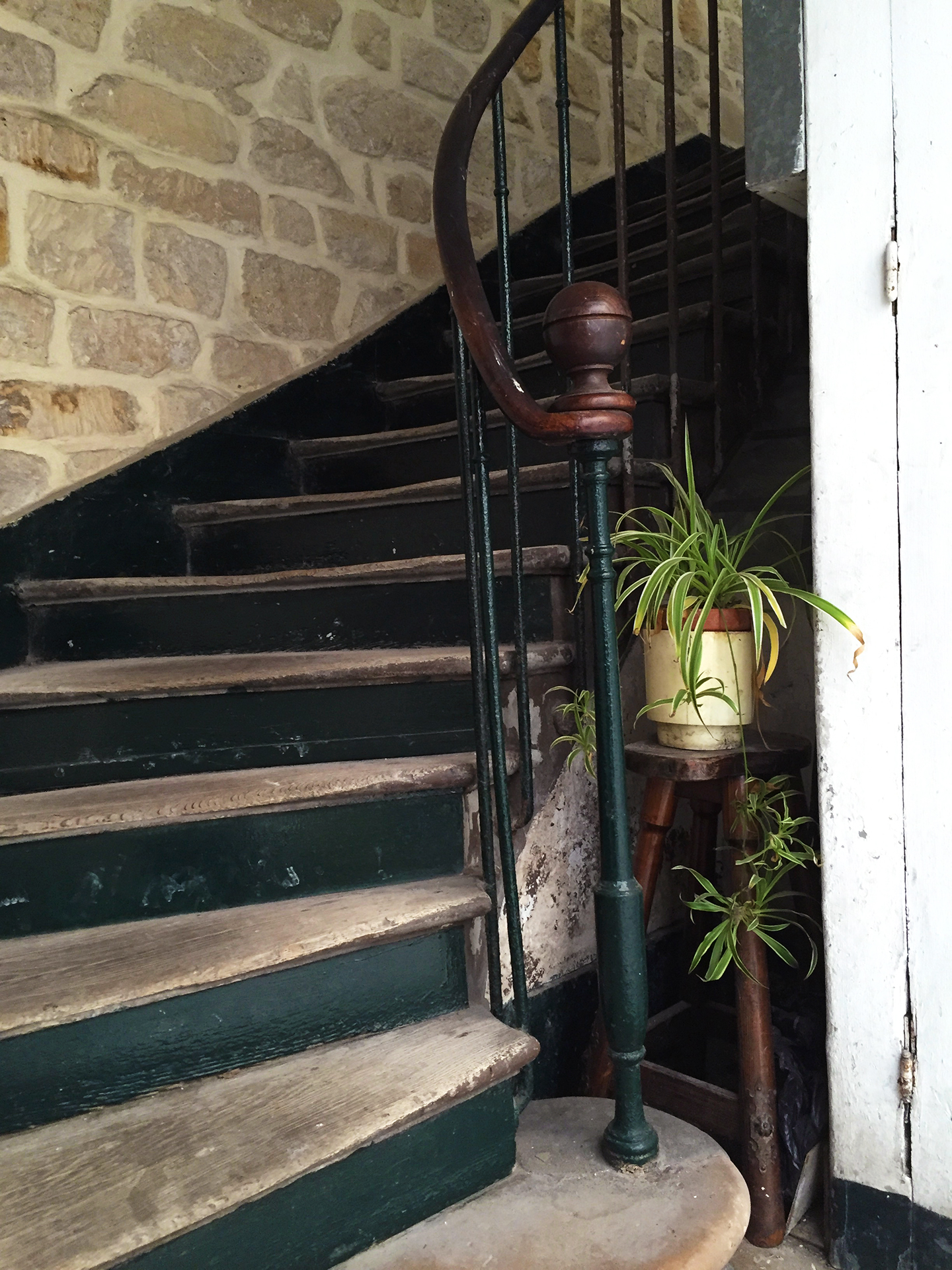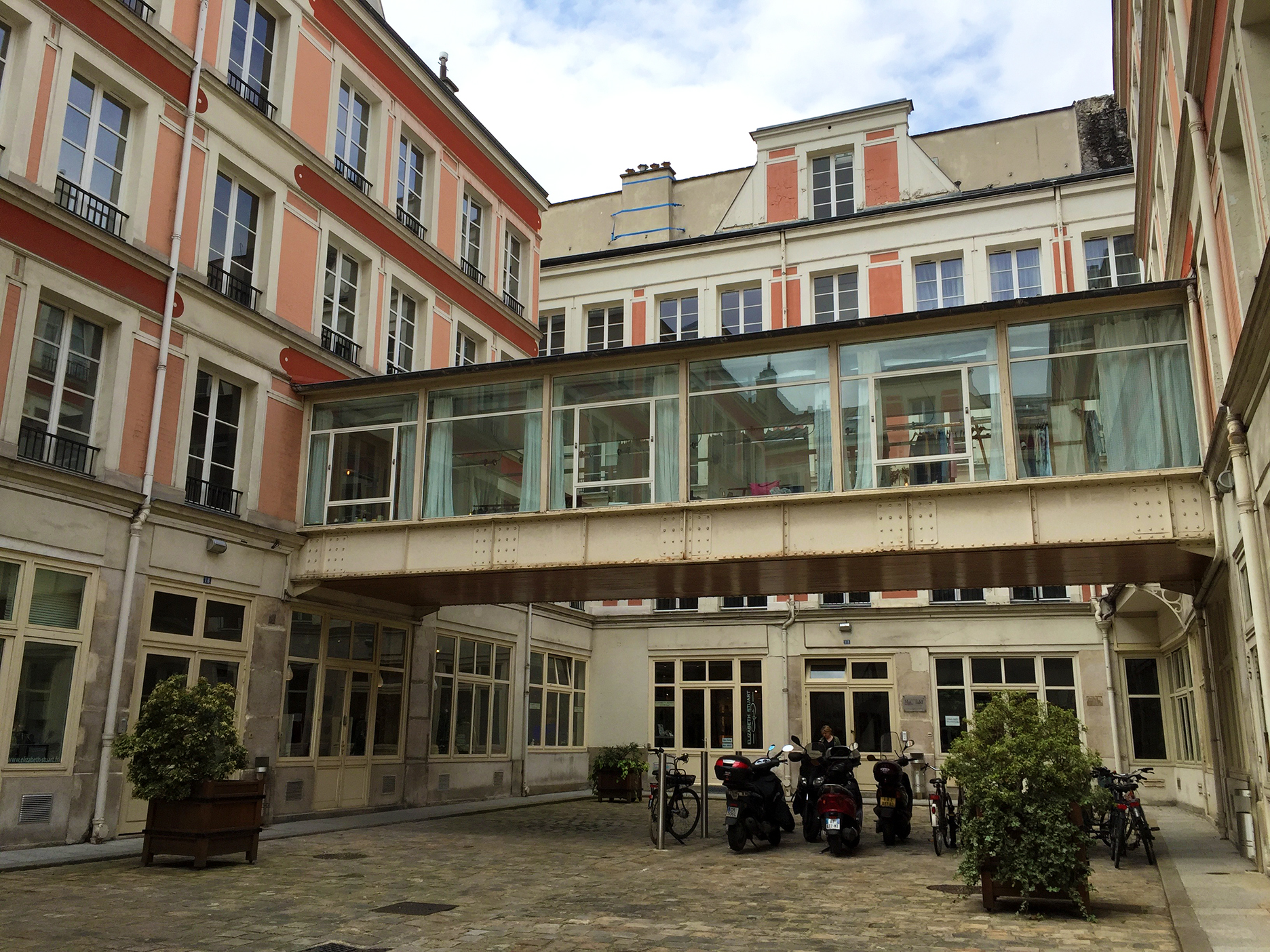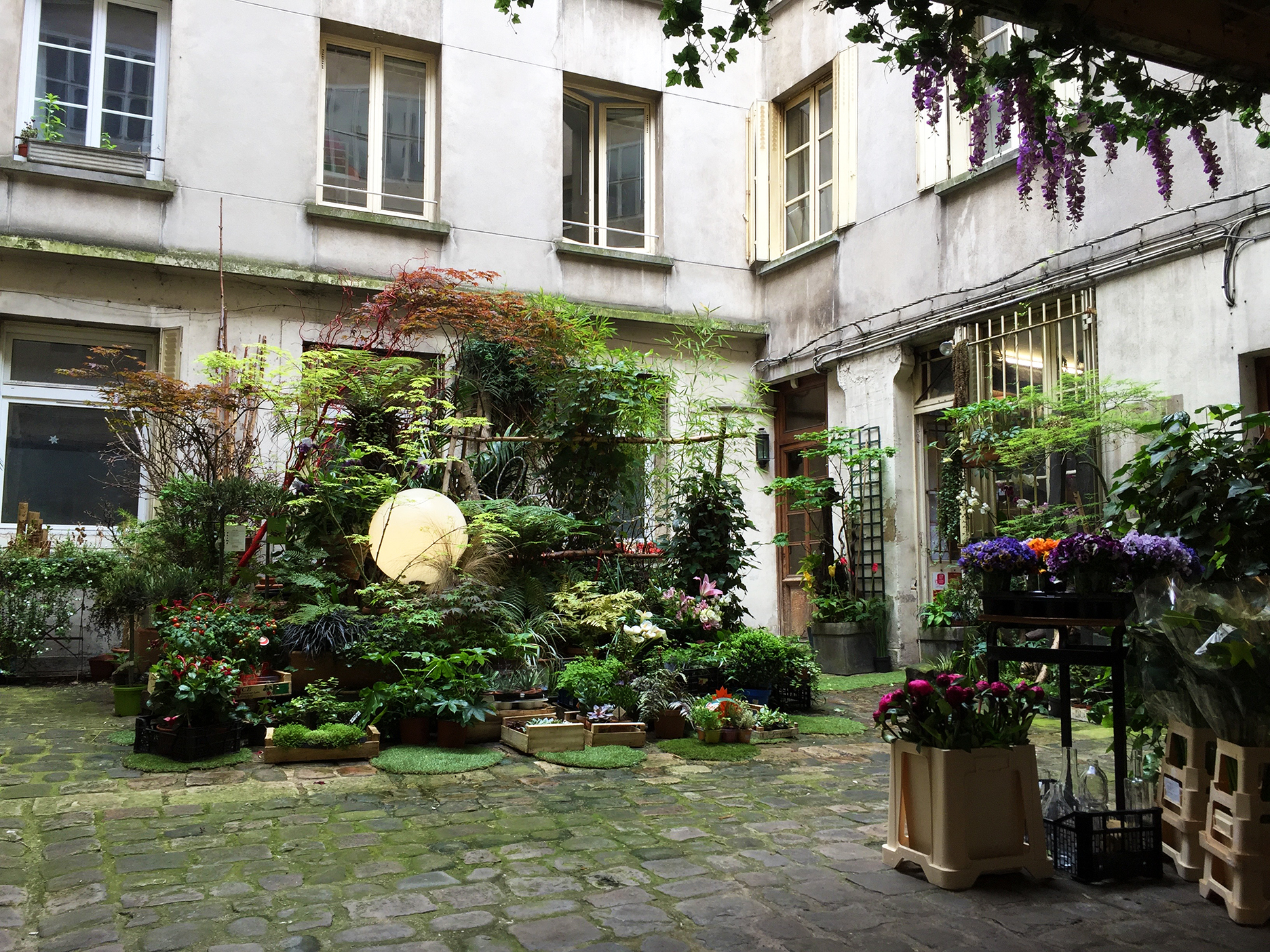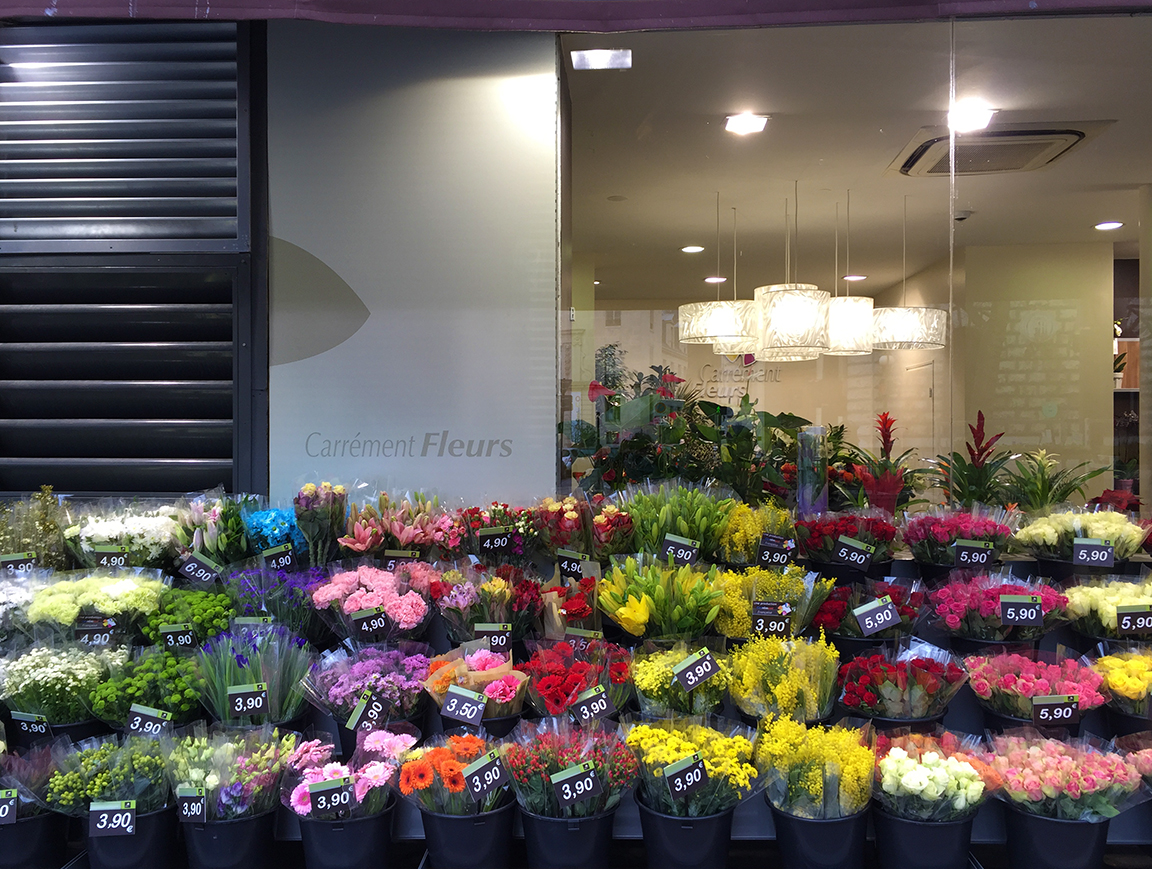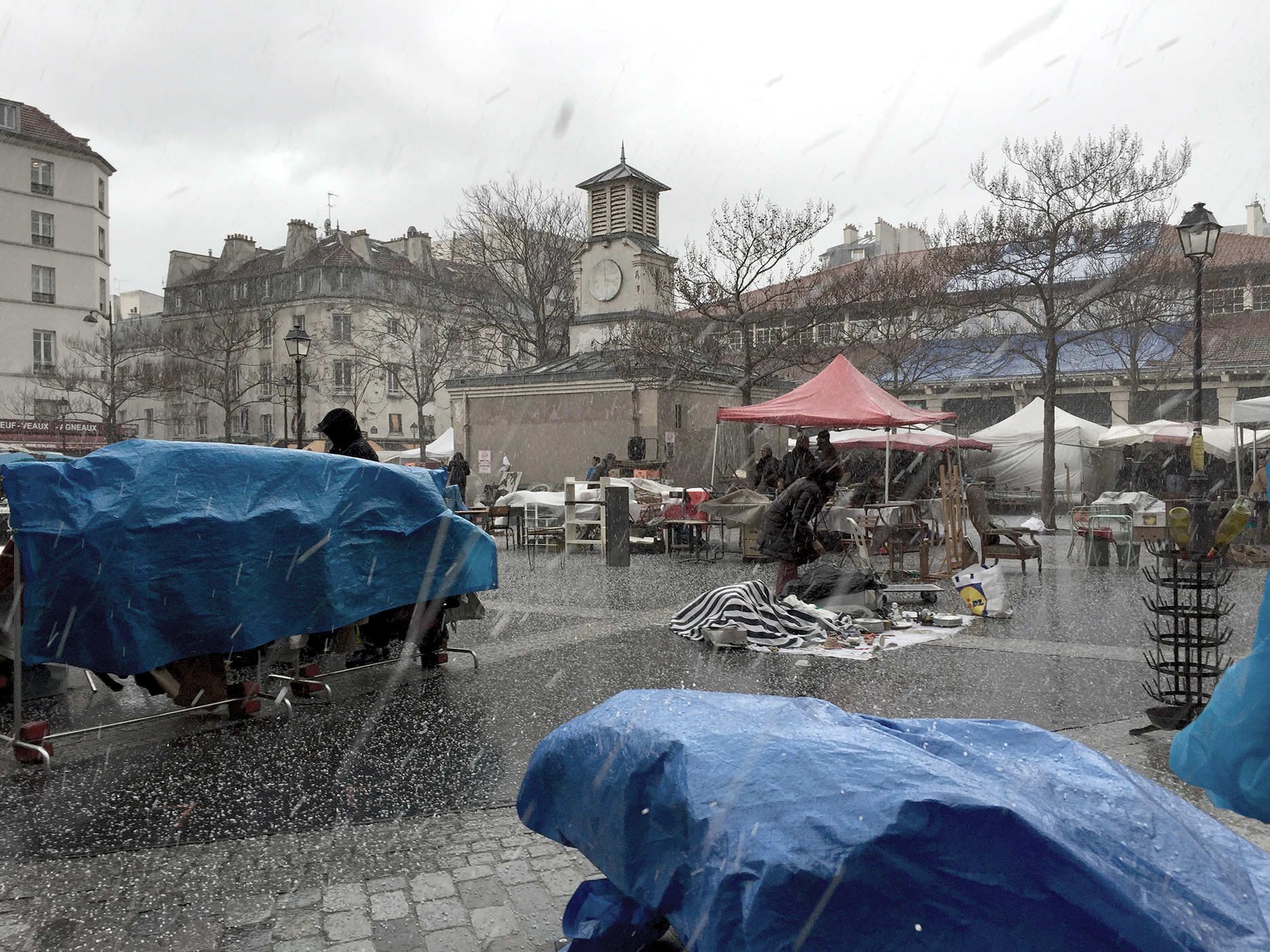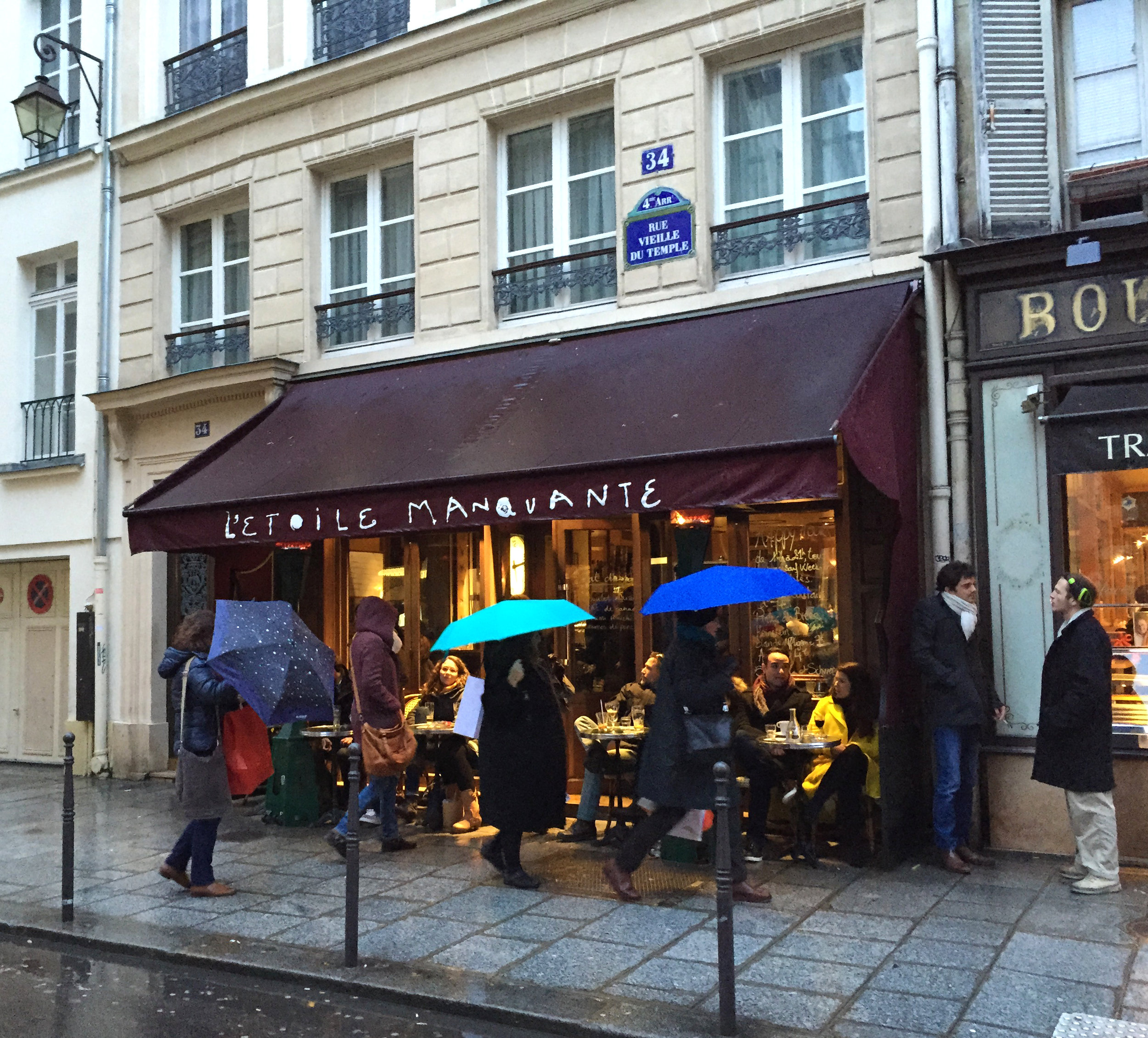Playing my Map Game before a trip to Paris, I was thrilled to draw L7. Faubourg Saint-Antoine is an area I first explored 37 years ago, during Rick’s first trip to France. Since he worked in the furniture industry, I thought it would be fun and interesting to stroll through the Paris neighborhood historically associated with menuisiers and ébénistes.
Passage du Chantier, the last vestige of the flourishing wood and furniture trade.
Chairs in various stages of construction, or renovation…
Private courtyard in passage du Chantier
For several centuries workers in this area outside the walls of Paris were exempt from taxes. Additionally, the proximity of the Seine meant that craftsmen had access to the wood supply coming into the capital. Already striving during the Middle Ages, Faubourg Saint-Antoine experienced its golden age during the XVII and XVIII centuries: its reputation in arts décoratifs was so well established that woodworkers, cabinet makers, upholsterers, and other artisans flocked from Holland and Germany to set up shop here.
Cour du Bel Air
Carriage entrance from rue du Faubourg Saint-Antoine to cour des Bourguignons
Cour des Bourguignons. Charles-Auguste Hollande, a wood trader, had the two wings built between 1862 and 1866. They were rented to Maison Krieger and then to Henri Racault; both were furniture manufacturers who employed hundreds of artisans and wood workers.
The iron and glass structure was added in 1868, along with the 105’ brick chimney that topped a steam engine.
On both sides of rue du Faubourg Saint-Antoine, between Bastille and hôpital Saint-Antoine, craftsmen opened up courtyards and passages: ateliers occupied the first floor while the upper levels were used for housing. More than 200 workshops were registered in the XVII century, all involved in wood and complementary activities such as varnishing, ironwork, textiles, ceramics, porcelain, marble, wallpaper, etc. Courtyards were like mini “villages” that composed a high-density community of people with related interests.
Floral shop at the corner of avenue Ledru-Rollin. Love the name.
Square Trousseau just off the busy street. Haussmannian buildings on the other three sides. Classic music kiosk and playground for children. A locals’ favorite.
Blé Sucré, a well-known boulangerie-pâtisserie across from square Trousseau. Perhaps the best croissants in Paris…
Like most areas in the city, this quartier has gone through substantial transformations since my first visit in the early 80s. Lifestyle changes (hello, Ikea) and the availability of inexpensive furniture from Asia ushered the decline of artisanal activities that had flourished since medieval times.
Passage Saint-Bernard. Co-working and IT consulting have replaced the traditional activities. Nice mur végétal and an inviting rooftop terrace.
The mosaic rhinoceros on passage Raush. Just a few years ago, there were seven other wild animals on the arcades of this building. I guess they all managed to escape their cages!
East Mamma trattoria at passage de la Main d’Or. If Mamma is around, hipsters can’t be too far away…
Cour de l’Ours
Ebénisterie Straure in cour de l’Ours. The santon of a woodworker sits in the window of the atelier.
Staircases open to the courtyards and lead to the upper (residential) levels
Some staircases have not been “gentrified” yet…
Thankfully, urban planners had the good idea to protect the courtyards and buildings of the area. Some have been lovingly renovated and still house a few furniture makers and restorers. Designers, architects, galleries, home decor shops round up the offering. So far, the gentrification efforts are progressing at a much slower pace than in the neighboring Marais or the area south of Pigalle. I feel le faubourg du meuble has not lost its soul and, at least for now, manages to retain some of its original population.
Cour des Trois Frères
Cour des Shadoks (their creator Jacques Rouxel lived here)
Two Shadoks! These cartoon birds appeared on French TV in 1968. They were absurdly stupid and I loved them.
This could be your lunch break area if you worked in the cour des Shadoks
Rue du Faubourg Saint-Antoine straddles the 11th and 12th arrondissements (odd numbers on the 11th side, even on the 12th.) There is no significant monument or museum, which means the street is virtually free of tourists. That’s a good thing. If you like to stroll without an agenda, this is the perfect place to explore. You hardly need a map: start from Bastille and walk into every passage, courtyard, and porte cochère that’s open on the even side. When you reach rue de Citeaux, cross the street and repeat on the other side. Make sure to check the section of rue de Charonne up to avenue Ledru-Rollin: lots of gems there, too!
Passage Lhomme, off rue de Charonne
Passage Lhomme
Passage Lhomme. As you explore the neighborhood, you’ll see a lot of signage that evoke its original activities.
Cour Jacques Viguès; a little more “monumental” than most.
Cour Jacques Viguès
Floral shop tucked in a courtyard
Cour du Panier Fleuri. Where the floral shop should be…
Cour Damoye, a peaceful retreat just one block from place de la Bastille.
Perhaps you’ll find your ideal chair in the Faubourg Saint-Antoine. This one is still “in progress…”
Vocabulary
Le menuisier: woodworker
L’ébéniste (m): cabinet maker
L’atelier (m): workshop
Le quartier: neighborhood
Le faubourg du meuble: furniture district
La porte cochère: carriage entrance


